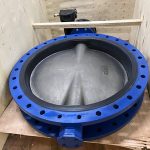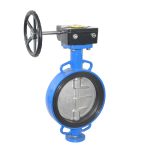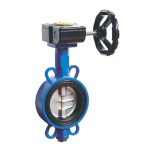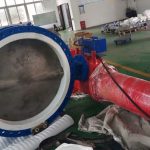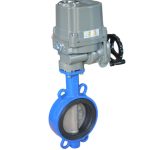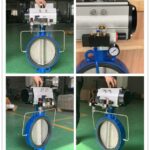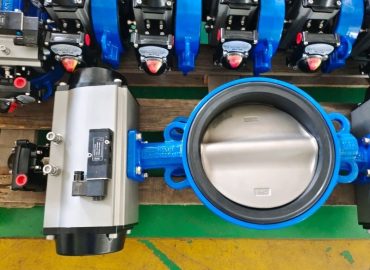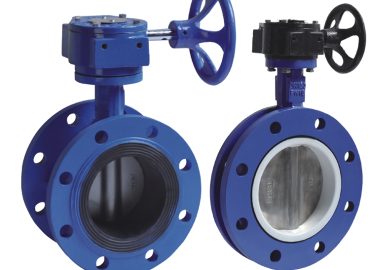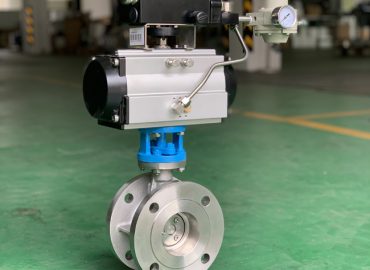Butterfly valves are essential components in various industries, playing a crucial role in controlling the flow of fluids and gases. One critical factor that determines their performance and longevity is the seat material, which forms the sealing surface between the valve disc and the valve body. Among the numerous seat materials available, EPDM (ethylene propylene diene monomer) rubber has gained popularity due to its unique properties and benefits. This article aims to provide an in-depth comparison of EPDM seat materials with other common materials, highlighting their advantages, limitations, and factors to consider when selecting the most suitable material for your butterfly valve applications.
Introduction
When comparing EPDM seat materials with other available materials for butterfly valves, it is essential to consider the unique properties and benefits each material offers. EPDM (ethylene propylene diene monomer) rubber is known for its excellent resistance to weathering, ozone, UV exposure, water, steam, and a wide range of chemicals. Additionally, it has a broad temperature range and exhibits good flexibility and resilience, making it suitable for various applications. In contrast, other common seat materials, such as Nitrile Rubber (NBR), Viton (FKM), PTFE (Teflon), and Silicone, each have their specific advantages and limitations. For instance, NBR is highly resistant to oil and fuel but has limited temperature capabilities compared to EPDM. Viton offers superior chemical resistance and high-temperature performance but is more expensive than EPDM. PTFE is known for its exceptional chemical inertness and low friction coefficient but lacks the flexibility and resilience of EPDM. Silicone offers excellent temperature resistance and flexibility but may not be suitable for some aggressive chemical environments. Ultimately, the choice of seat material depends on factors such as temperature range, chemical compatibility, pressure requirements, budget constraints, and long-term performance expectations. While EPDM stands out as a versatile and cost-effective option for many butterfly valve applications, it is crucial to evaluate the specific requirements of each application to ensure the appropriate material selection for optimal performance and longevity.
Brief overview of butterfly valves and their applications
Wafer butterfly valve are quarter-turn rotary motion valves designed to regulate or isolate the flow of fluids and gases in various industries. They consist of a circular disc mounted on a rotating shaft that moves within the valve body, opening or closing the passage as required. Butterfly valves are known for their compact design, ease of operation, and cost-effectiveness, making them a popular choice for numerous applications. They are commonly used in water treatment plants, power generation facilities, chemical and petrochemical industries, food and beverage processing, and HVAC systems, among others. The versatility of butterfly valves allows them to handle a wide range of media, including water, air, steam, oil, and corrosive chemicals, at varying pressures and temperatures. As such, selecting the appropriate valve components, particularly the seat material, is crucial to ensure optimal performance, reliability, and longevity in each specific application.
Importance of selecting the right seat material for butterfly valves
The importance of selecting the right seat material for butterfly valves cannot be overstated, as it directly impacts the valve’s performance, durability, and reliability in controlling fluid flow across various applications. The seat material forms the sealing surface between the valve disc and the valve body, ensuring a tight seal to prevent leakage when the valve is in the closed position. Choosing an appropriate seat material depends on factors such as the type of media being handled, temperature and pressure requirements, chemical compatibility, and industry-specific standards and regulations. A well-suited seat material ensures optimal sealing performance, reduces maintenance costs, prolongs the valve’s service life, and ultimately contributes to the efficiency and safety of the overall system. As each seat material has its unique properties and benefits, it is crucial to carefully evaluate the specific requirements of each application to make an informed decision that maximizes the functionality and longevity of the butterfly valves in use.
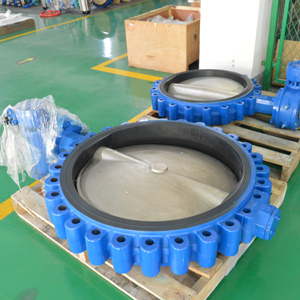
Introduction to EPDM as a common seat material
EPDM (ethylene propylene diene monomer) rubber has emerged as a common seat material for butterfly valves due to its unique combination of properties and benefits. As a synthetic elastomer, EPDM is known for its excellent resistance to weathering, ozone, and ultraviolet (UV) exposure, making it highly durable in various environmental conditions. Additionally, EPDM demonstrates good resistance to water, steam, and a wide range of chemicals, ensuring compatibility with numerous media found in different industries. Its wide temperature range and inherent flexibility and resilience contribute to the material’s ability to maintain a reliable seal and withstand the rigors of repeated valve operation. Given these advantages, EPDM has become a popular choice for butterfly valve seat materials across a variety of sectors, including water treatment, power generation, chemical processing, and HVAC systems, providing a cost-effective and long-lasting solution for many applications.
EPDM Seat Materials: Properties and Benefits
EPDM (ethylene propylene diene monomer) rubber, a widely-used seat material for butterfly valves, boasts an array of properties and benefits that make it suitable for numerous applications. As a synthetic elastomer, EPDM is characterized by its excellent resistance to environmental factors such as weathering, ozone, and ultraviolet (UV) exposure, ensuring its durability and longevity in a variety of conditions. Furthermore, EPDM displays remarkable resistance to water, steam, and an extensive range of chemicals, making it compatible with diverse media encountered in different industries. Its broad temperature range, spanning from -50°C to 150°C (-58°F to 302°F), allows EPDM to perform reliably across various temperature requirements. The material’s inherent flexibility and resilience enable it to maintain a consistent seal and withstand the stress of repeated valve operations. Consequently, EPDM seat materials offer long-lasting performance, adaptability to a wide array of applications, and a cost-effective solution that meets the demands of many industries, including water treatment, power generation, chemical processing, and HVAC systems. By combining these advantageous properties, EPDM has become a popular choice for butterfly valve seat materials, ensuring optimal sealing performance and extended service life in numerous settings.
Description of EPDM (ethylene propylene diene monomer) rubber
EPDM (ethylene propylene diene monomer) rubber is a versatile synthetic elastomer known for its unique combination of properties that make it suitable for a wide range of applications. EPDM is derived from the polymerization of ethylene, propylene, and a small amount of diene monomer, which provides cross-linking sites for vulcanization. This composition results in an elastomer with excellent resistance to environmental factors such as weathering, ozone, and ultraviolet (UV) exposure, ensuring its durability in various conditions. Additionally, EPDM displays remarkable resistance to water, steam, and an extensive range of chemicals, making it compatible with diverse media encountered in different industries. Its broad temperature range and inherent flexibility and resilience enable EPDM to maintain consistent performance across various temperature requirements and withstand the stress of repeated use. Due to these advantageous properties, EPDM rubber has found widespread use in various industries, including automotive, construction, HVAC systems, and as seat materials for butterfly valves, offering long-lasting performance, adaptability, and cost-effectiveness.
Key properties of EPDM
EPDM (ethylene propylene diene monomer) rubber is a synthetic elastomer distinguished by key properties that make it suitable for a wide array of applications. One of its most notable characteristics is its exceptional resistance to environmental factors such as weathering, ozone, and ultraviolet (UV) exposure, ensuring durability and longevity in various conditions. Additionally, EPDM exhibits excellent resistance to water, steam, and a broad range of chemicals, making it compatible with numerous media across different industries. Its wide temperature range, typically spanning from -50°C to 150°C (-58°F to 302°F), allows EPDM to perform reliably amidst diverse temperature requirements. The material’s inherent flexibility and resilience enable it to maintain consistent performance and withstand the stress of repeated use. These key properties contribute to EPDM’s widespread use in various sectors, including automotive, construction, HVAC systems, and as seat materials for butterfly valves, offering a versatile, durable, and cost-effective solution for a multitude of applications.
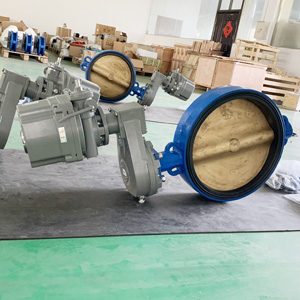
Benefits of using EPDM as a seat material
Utilizing EPDM (ethylene propylene diene monomer) rubber as a seat material for butterfly valve offers numerous benefits that contribute to the valve’s overall performance and reliability. One of the primary advantages is EPDM’s excellent resistance to environmental factors, such as weathering, ozone, and ultraviolet (UV) exposure, which ensures its durability and longevity in various conditions. Additionally, EPDM’s compatibility with a wide range of media, including water, steam, and many chemicals, makes it suitable for use across multiple industries. Its broad temperature range allows for reliable performance under diverse temperature requirements, while its inherent flexibility and resilience enable it to maintain a consistent seal and withstand the stress of repeated valve operations. These benefits result in reduced maintenance costs, extended service life, and enhanced efficiency for the systems in which EPDM seat materials are employed. Ultimately, EPDM’s advantageous properties make it a cost-effective and versatile choice for butterfly valve seat materials, ensuring optimal sealing performance and adaptability across numerous applications.
Comparison of EPDM with Other Seat Materials
When comparing EPDM (ethylene propylene diene monomer) rubber to other seat materials for butterfly valves, it is essential to consider the unique properties and benefits each material offers. EPDM stands out for its exceptional resistance to environmental factors such as weathering, ozone, and ultraviolet (UV) exposure, ensuring durability and longevity in various conditions. Additionally, it exhibits excellent compatibility with a wide range of media, including water, steam, and many chemicals, making it suitable for use across multiple industries. EPDM’s broad temperature range allows for reliable performance under diverse temperature requirements, while its flexibility and resilience enable it to maintain a consistent seal and withstand repeated valve operations.
In contrast, other common seat materials such as Nitrile (Buna-N) and PTFE (polytetrafluoroethylene) possess distinct properties that may be more suitable for specific applications. For instance, Nitrile rubber is known for its excellent resistance to oil, fuel, and other petroleum-based products, making it ideal for applications involving these substances. However, Nitrile has lower resistance to temperature extremes and environmental factors compared to EPDM. On the other hand, PTFE is renowned for its exceptional chemical resistance, low friction coefficient, and wide temperature range, making it suitable for highly corrosive or high-temperature applications. However, PTFE is generally more expensive and less flexible than EPDM.
Ultimately, the choice of seat material for butterfly valves depends on factors such as the type of media being handled, temperature and pressure requirements, chemical compatibility, and industry-specific standards and regulations. Each seat material has unique properties and benefits, and it is crucial to carefully evaluate the specific requirements of each application to make an informed decision that maximizes the functionality and longevity of the butterfly valves in use. In summary, EPDM provides a versatile and cost-effective solution for a wide range of applications, while other seat materials like Nitrile and PTFE may be more suitable for specific, specialized use-cases.
Nitrile Rubber (NBR)
When comparing EPDM (ethylene propylene diene monomer) rubber with Nitrile Rubber (NBR) as seat materials for butterfly valves, it is crucial to evaluate the unique properties and benefits each material offers. EPDM stands out for its exceptional resistance to environmental factors such as weathering, ozone, and ultraviolet (UV) exposure, ensuring durability and longevity in various conditions. Additionally, it exhibits excellent compatibility with a wide range of media, including water, steam, and many chemicals, making it suitable for use across multiple industries. EPDM’s broad temperature range allows for reliable performance under diverse temperature requirements, while its flexibility and resilience enable it to maintain a consistent seal and withstand repeated valve operations.
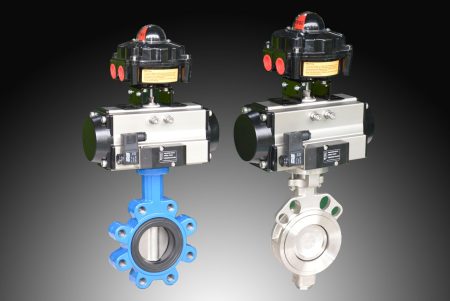
In contrast, NBR, also known as Buna-N, possesses distinct properties that may be more suitable for specific applications. One of the most notable characteristics of NBR is its excellent resistance to oil, fuel, and other petroleum-based products, making it ideal for applications involving these substances. NBR also demonstrates good abrasion resistance and mechanical strength, contributing to its durability under demanding conditions. However, NBR has lower resistance to temperature extremes and environmental factors like ozone and UV exposure compared to EPDM and generally operates within a temperature range of -40°C to 120°C (-40°F to 248°F).
Viton (FKM)
When comparing EPDM (ethylene propylene diene monomer) rubber with Viton (FKM) as seat materials for butterfly valves, it is imperative to consider the unique properties and benefits each material presents. EPDM is known for its exceptional resistance to environmental factors such as weathering, ozone, and ultraviolet (UV) exposure, ensuring durability and longevity in various conditions. Additionally, it exhibits excellent compatibility with a wide range of media, including water, steam, and many chemicals, making it suitable for use across multiple industries. EPDM’s broad temperature range allows for reliable performance under diverse temperature requirements, while its flexibility and resilience enable it to maintain a consistent seal and withstand repeated valve operations.
On the other hand, Viton (FKM) is a fluoropolymer elastomer that boasts exceptional chemical resistance, especially to hydrocarbons, oils, and high-temperature environments. Its superior resistance to heat, with an operating temperature range of -20°C to 200°C (-4°F to 392°F), makes it a preferred choice for applications involving high temperatures or aggressive chemicals. Furthermore, Viton offers excellent resistance to swelling when exposed to a broad spectrum of chemicals, contributing to its durability and long service life. However, it is worth noting that Viton is generally more expensive than EPDM and may not be the most cost-effective solution for all applications
PTFE (Teflon)
When comparing EPDM (ethylene propylene diene monomer) rubber with PTFE (Teflon) as seat materials for electric butterfly valve, it is essential to take into account the distinct properties and benefits each material possesses. EPDM is renowned for its exceptional resistance to environmental factors such as weathering, ozone, and ultraviolet (UV) exposure, ensuring durability and longevity in various conditions. Additionally, it exhibits excellent compatibility with a wide range of media, including water, steam, and many chemicals, making it suitable for use across multiple industries. EPDM’s broad temperature range allows for reliable performance under diverse temperature requirements, while its flexibility and resilience enable it to maintain a consistent seal and withstand repeated valve operations.
In contrast, PTFE (Teflon) is a fluoropolymer that offers outstanding chemical resistance, low friction coefficient, and wide temperature range, spanning from approximately -200°C to 260°C (-328°F to 500°F). These properties make PTFE an ideal choice for highly corrosive or high-temperature applications, as well as those requiring minimal friction for smooth operation. Additionally, PTFE exhibits excellent electrical insulating properties, making it suitable for use in electronics and other electrically sensitive applications. However, PTFE is generally more expensive and less flexible than EPDM, which may limit its suitability for certain applications.
Silicone
When comparing EPDM (ethylene propylene diene monomer) rubber with silicone as seat materials for butterfly valves, it is essential to consider the unique properties and benefits each material offers. EPDM is known for its exceptional resistance to environmental factors such as weathering, ozone, and ultraviolet (UV) exposure, ensuring durability and longevity in various conditions. Additionally, it exhibits excellent compatibility with a wide range of media, including water, steam, and many chemicals, making it suitable for use across multiple industries. EPDM’s broad temperature range allows for reliable performance under diverse temperature requirements, while its flexibility and resilience enable it to maintain a consistent seal and withstand repeated valve operations.
Silicone, on the other hand, is an elastomer that boasts remarkable temperature resistance, spanning from approximately -60°C to 230°C (-76°F to 446°F), making it an ideal choice for applications involving extreme temperature fluctuations or high-temperature environments. Silicone also possesses excellent resistance to weathering, ozone, and UV exposure, similar to EPDM. However, silicone’s chemical resistance is generally lower compared to EPDM, limiting its suitability for certain chemically aggressive applications. Additionally, silicone is not recommended for use with petroleum-based fluids and oils due to its susceptibility to swelling and degradation when exposed to these substances.

Factors to Consider When Choosing Seat Material
When selecting the appropriate seat material for butterfly valves or other sealing applications, several crucial factors must be taken into consideration to ensure optimal performance, durability, and compatibility with the specific requirements of each application. One of the primary factors to consider is the chemical compatibility of the seat material with the media being handled, as different materials exhibit varying levels of resistance to chemicals, oils, and other substances. Ensuring the chosen material can withstand exposure to the specific media in use is critical in preventing leakage, swelling, or degradation that could compromise the valve’s functionality. Another important factor is the operating temperature range of the seat material, as different elastomers and polymers have distinct temperature limits that must be compatible with the application’s temperature requirements. Choosing a material that can withstand the expected temperature fluctuations will help maintain the integrity and sealing performance of the valve.
Additionally, mechanical properties such as tensile strength, abrasion resistance, and resilience play a significant role in determining the durability and longevity of the seat material under various operating conditions. Materials with high tensile strength and abrasion resistance are more likely to withstand wear and tear, while those with good resilience can better maintain a consistent seal and recover from deformation caused by continuous valve operations. Pressure requirements should also be taken into account, as the seat material must be capable of withstanding the specific pressure ranges of the application without compromising its sealing performance.
Environmental factors such as weathering, ozone, and ultraviolet (UV) exposure can also impact the performance and lifespan of the seat material. Selecting a material with excellent resistance to these factors will help ensure its durability and reliability in outdoor or harsh environmental conditions. Furthermore, industry-specific standards, regulations, and certifications may also dictate the choice of seat material, as certain industries like food and beverage or pharmaceuticals require materials that comply with specific guidelines and safety standards. Lastly, cost-effectiveness should be considered, as finding a balance between performance and affordability is essential in making an informed decision that maximizes the functionality and longevity of the butterfly valves or sealing applications in use. By carefully evaluating these factors, one can choose the most suitable seat material that fulfills the unique requirements of each application.
Conclusion
In conclusion, choosing the right seat material for butterfly valves is a critical decision that can significantly impact the performance, durability, and reliability of a valve system. Among the various seat materials available, EPDM (ethylene propylene diene monomer) rubber has emerged as a versatile and cost-effective option for a wide range of applications. Its exceptional resistance to environmental factors such as weathering, ozone, and ultraviolet (UV) exposure ensures durability and longevity under various conditions. Additionally, EPDM’s compatibility with numerous media types, including water, steam, and many chemicals, makes it a suitable choice across multiple industries.
However, it is essential to recognize that no single seat material can cater to all application requirements, and comparing EPDM with other seat materials, such as Nitrile Rubber (NBR), Viton (FKM), PTFE (Teflon), and silicone, highlights their respective strengths and limitations. For instance, NBR offers excellent resistance to oil and petroleum-based products, making it ideal for applications involving these substances. Viton (FKM) provides superior chemical resistance and high-temperature performance, while PTFE (Teflon) excels in highly corrosive or high-temperature environments and offers low friction properties. Silicone, on the other hand, is well-suited for extreme temperature ranges or applications requiring high resistance to weathering and UV exposure.
To make an informed decision when selecting a seat material for butterfly valves, it is crucial to carefully evaluate the specific requirements of each application, taking into account factors such as media type, temperature and pressure ranges, chemical compatibility, environmental conditions, industry-specific standards, and regulations. By thoroughly assessing these factors and considering the unique properties and benefits of each seat material, engineers and designers can choose the most suitable solution that maximizes the functionality, longevity, and overall success of their valve systems.
In summary, EPDM seat materials offer a reliable and cost-effective option for a broad range of applications. However, to ensure optimal performance and longevity, it is vital to consider the unique requirements of each application and compare EPDM with other available seat materials, such as NBR, Viton (FKM), PTFE (Teflon), and silicone. By doing so, you can make an informed decision that best meets the specific needs of your project and contributes to the overall efficiency and success of your valve system.
Recap of the comparison between EPDM and other seat materials
In recap, the comparison between EPDM and other seat materials such as Nitrile Rubber (NBR), Viton (FKM), PTFE (Teflon), and silicone highlights the unique properties and benefits each material offers in butterfly valve applications. EPDM is a versatile and cost-effective option known for its excellent resistance to weathering, ozone, UV exposure, and compatibility with a wide range of media. NBR excels in oil and petroleum-based applications due to its superior resistance to these substances. Viton (FKM) offers exceptional chemical resistance and high-temperature performance, while PTFE (Teflon) is ideal for highly corrosive or high-temperature environments and provides low friction properties. Silicone is suitable for extreme temperature ranges or applications requiring high resistance to weathering and UV exposure. The choice of seat material ultimately depends on factors such as media type, temperature and pressure requirements, chemical compatibility, environmental conditions, and industry-specific standards and regulations. By carefully evaluating these factors and understanding the distinct properties of each seat material, an informed decision can be made that maximizes the functionality, longevity, and overall success of butterfly valve systems.

Importance of selecting the appropriate seat material based on application requirements
The importance of selecting the appropriate seat material based on application requirements cannot be overstated, as it directly impacts the performance, durability, and reliability of butterfly valve systems. Choosing the right material ensures that the valve can effectively handle the specific media type, temperature and pressure ranges, environmental conditions, and chemical compatibility requirements of each unique application. By accurately evaluating these factors, engineers and designers can avoid potential issues such as leakage, swelling, or degradation of the seat material, which could compromise the valve’s functionality and lead to costly downtime or maintenance. Additionally, adhering to industry-specific standards and regulations is crucial for maintaining safety and compliance within highly regulated sectors like food and beverage, pharmaceuticals, or petrochemical industries. Ultimately, selecting the appropriate seat material based on application requirements is a critical decision that contributes to the overall efficiency, longevity, and success of a valve system, ensuring optimal performance and satisfaction for end-users.
EPDM as a versatile and cost-effective option for many butterfly valve applications
EPDM (ethylene propylene diene monomer) rubber has emerged as a versatile and cost-effective option for many butterfly valve applications due to its unique properties and benefits. Its exceptional resistance to environmental factors such as weathering, ozone, and ultraviolet (UV) exposure ensures durability and longevity under various conditions, making it suitable for both indoor and outdoor applications. EPDM’s compatibility with a wide range of media, including water, steam, and many chemicals, allows it to cater to the demands of multiple industries, from water treatment to chemical processing. The material’s broad temperature range and flexibility enable it to maintain a consistent seal and withstand repeated valve operations, ensuring reliable performance in diverse temperature requirements. Furthermore, its relatively lower cost compared to some other seat materials makes EPDM an attractive choice for projects with budget constraints. Overall, EPDM’s combination of versatility, durability, and cost-effectiveness makes it an appealing option for a wide array of butterfly valve applications across various sectors.



